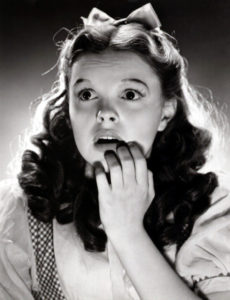Last week I posted about tension and “death stakes”. This week I’ll broaden the conversation to discuss conflict, in the most general terms.
Once again, I’ll also invoke one of my favorite writers, James Scott Bell, and his craft book CONFLICT AND SUSPENSE. He states that a successful novel is “the emotionally satisfying account of how a character deals with imminent death.”
You’ve got a super idea for a story, and identified the death stakes (right?) Once you’ve taken this step, your job is to build the landscape in which you immerse your reader in conflict. How that character deals with the constant threat of death (whether physical, psychological, or professional) creates the emotional connection with your reader.
Bell identifies four basic components of conflict (you can remember it by the acronym LOCK) as…
- a Lead worth following. That is, a protagonist who is, if not likable, at the very least relatable. Someone to root for, someone to care about, someone you want to spend a lot of time with. Even in plot-driven fiction, your protagonist must be dimensional and heroic (think Dirty Harry, or Katniss Everdeen).
- an Objective. What does your protagonist care about most in the world? What is worth dying for – worth changing for? Because your protagonist must change. The arc of your novel is the arc of your character’s change and growth (Harry Potter from boy orphan to powerful wizard, from alone to part of a community). She must find some deep belief that drives her not only through the novel but through life, and she must be willing to give up her very soul to achieve it (Harry, willing to die in combat with Voldemort).
- a Confrontation. Now, antagonists can take on many shades. Scarlett O’Hara faces the loss of her way of life. In THE BOOK THIEF, Liesel faces Nazism. In the movie Cast Away, Chuck Nolan faces nature. Katniss faces an entire society. But most of the time, an antagonist is another human, who must be as three-dimensional as your protagonist. Voldemort is a classic example – we know his backstory, and why he became such a horror, and even feel (a bit) sorry for him.
- a Knockout ending. You have to resolve the main character’s arc, satisfy his objective, end right after your protagonist has suffered the highest stakes, you must be unpredictable – even surprising – in your outcome. Luke Skywalker’s father makes the ultimate sacrifice. Liesel finds Max and lives out her life after the war. Frodo makes for the west, right when he should be enjoying success. All heart-wrenching, satisfying, unexpected and yet totally believable endings.
In my forthcoming middle grade novel, CHATELAINE, my protagonist is Kat, a 12-year old girl caught in the early days of World War 2 (my Lead). She has to be both mother and father to her siblings when they’re sent to a creepy castle in Scotland, while their father goes missing on the Continent (my Objective). She faces a sinister series of events (my Confrontation) before discovering the twist that will give her power over her adversaries (my Knockout ending, and my resolved death stakes.)
This is conflict at the grandest strokes of craft. Coming up: conflict at the page and scene level.


Every mnemonic device helps! Thanks for the summary — and now I have a new craft book to read. 🙂
You are so welcome, Jen! I really love his craft books.